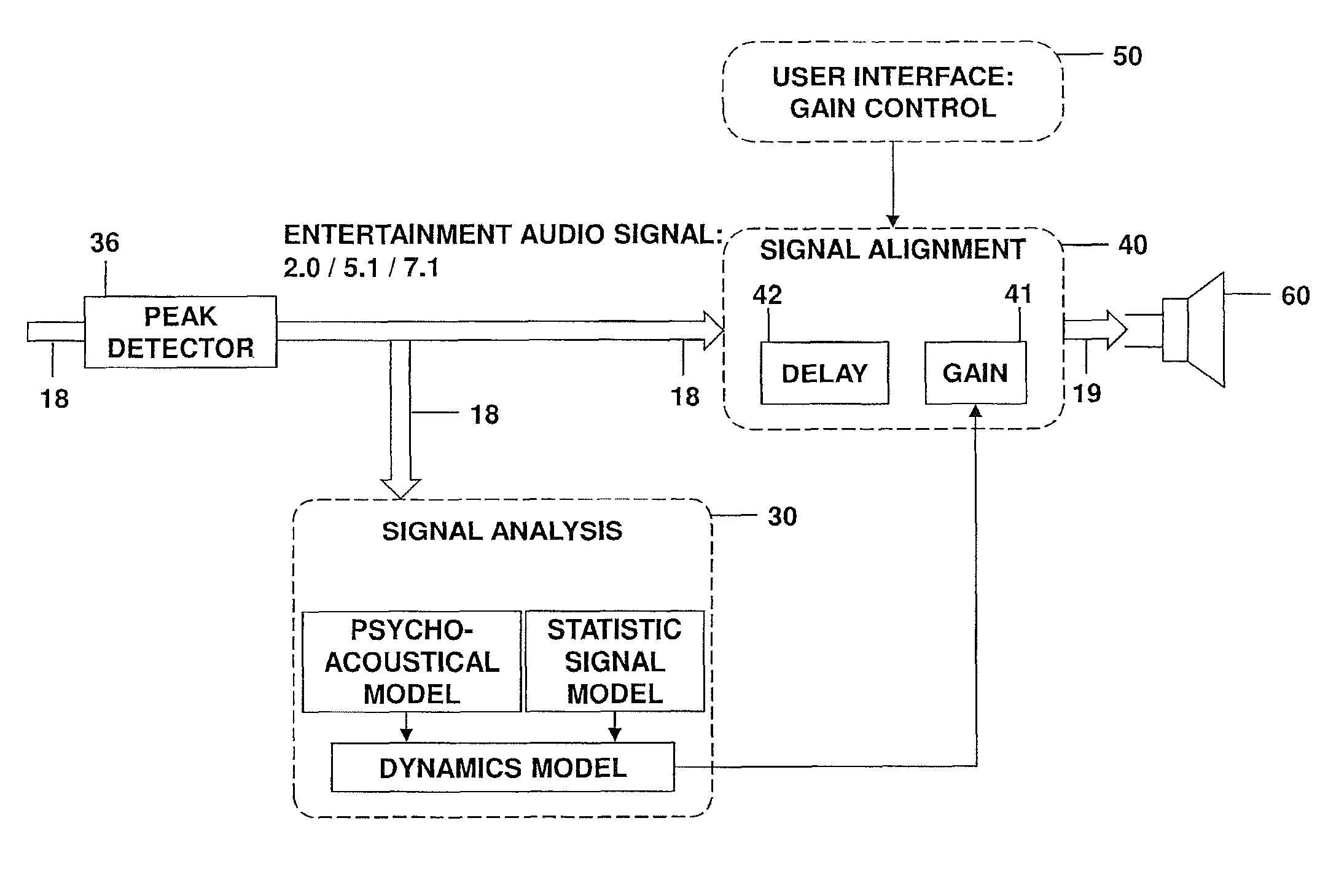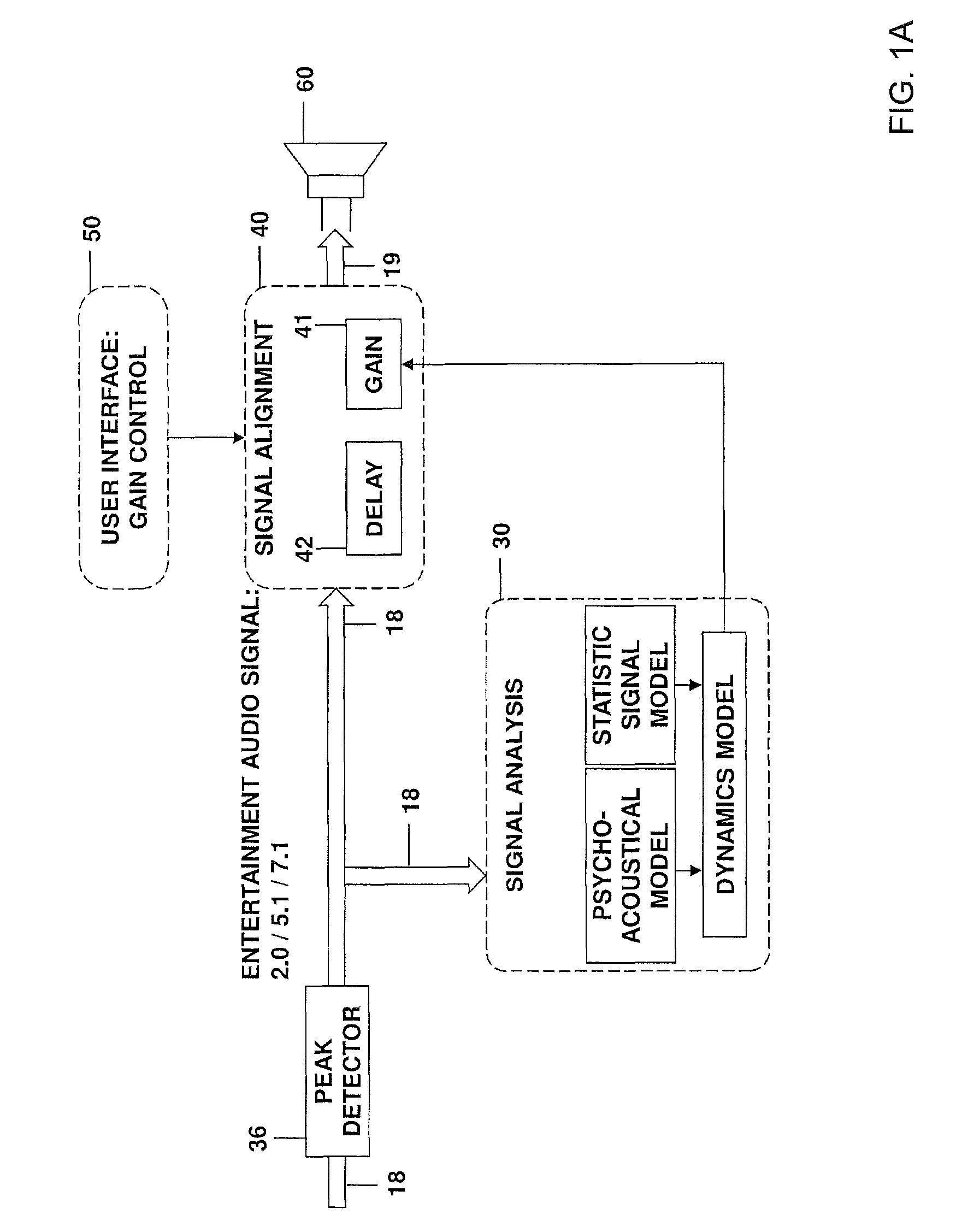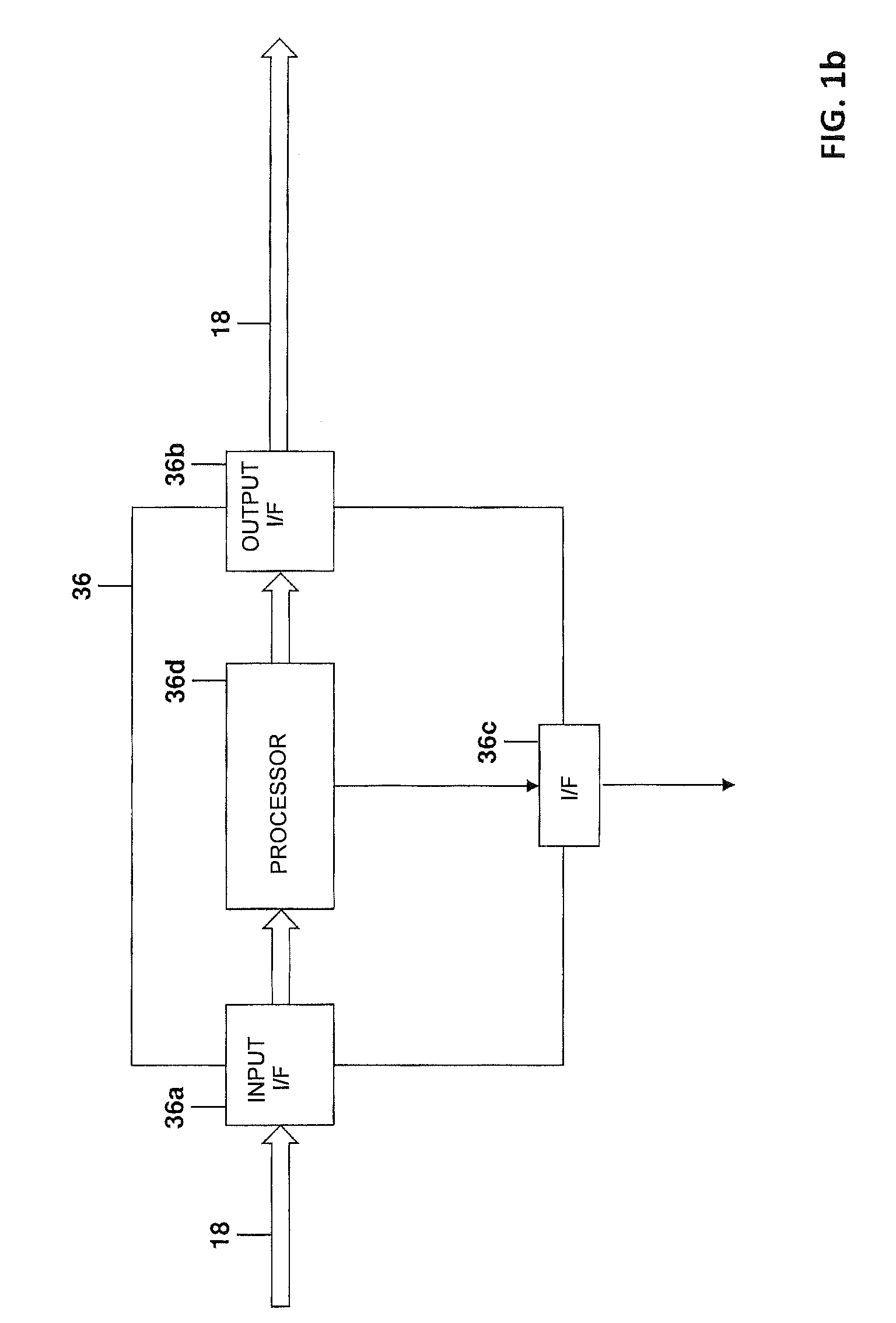Peak detection when adapting a signal gain based on signal loudness
a signal gain and gain technology, applied in the field of audio signal processing, can solve the problems of latency into the system, fast changes or short peak of the signal level, and may not have a strong influence on the perceived loudness, so as to improve the flexibility of controlling the output signal level, reduce hardware requirements, and optimize the effect of delay
- Summary
- Abstract
- Description
- Claims
- Application Information
AI Technical Summary
Benefits of technology
Problems solved by technology
Method used
Image
Examples
Embodiment Construction
[0035]In the following, the invention will be explained in further detail by referring to exemplary embodiments and to the accompanying drawings. The illustrated embodiments relate to techniques for adapting a signal gain.
[0036]In FIG. 1a, a system is shown which allows for adapting the signal gain. An audio input signal 18 obtained from an audio source enters a peak detector 36. The entertainment or audio input signal 18 can be, for example, a 2.0, 5.1, or 7.1 audio signal or another format. The peak detector analyzes the audio input signal 18 to establish a current input signal level of the audio input signal 18. From the peak detector 36, the audio input signal is forwarded to an audio signal analyzing unit 30 in which the loudness is determined using a psycho-acoustical model of the human hearing and using signal statics.
[0037]The audio input signal 18 is also input into a signal controller 40 comprising a gain unit 41 and a delay element 42. The gain applied by the gain unit 41...
PUM
 Login to View More
Login to View More Abstract
Description
Claims
Application Information
 Login to View More
Login to View More - R&D
- Intellectual Property
- Life Sciences
- Materials
- Tech Scout
- Unparalleled Data Quality
- Higher Quality Content
- 60% Fewer Hallucinations
Browse by: Latest US Patents, China's latest patents, Technical Efficacy Thesaurus, Application Domain, Technology Topic, Popular Technical Reports.
© 2025 PatSnap. All rights reserved.Legal|Privacy policy|Modern Slavery Act Transparency Statement|Sitemap|About US| Contact US: help@patsnap.com



